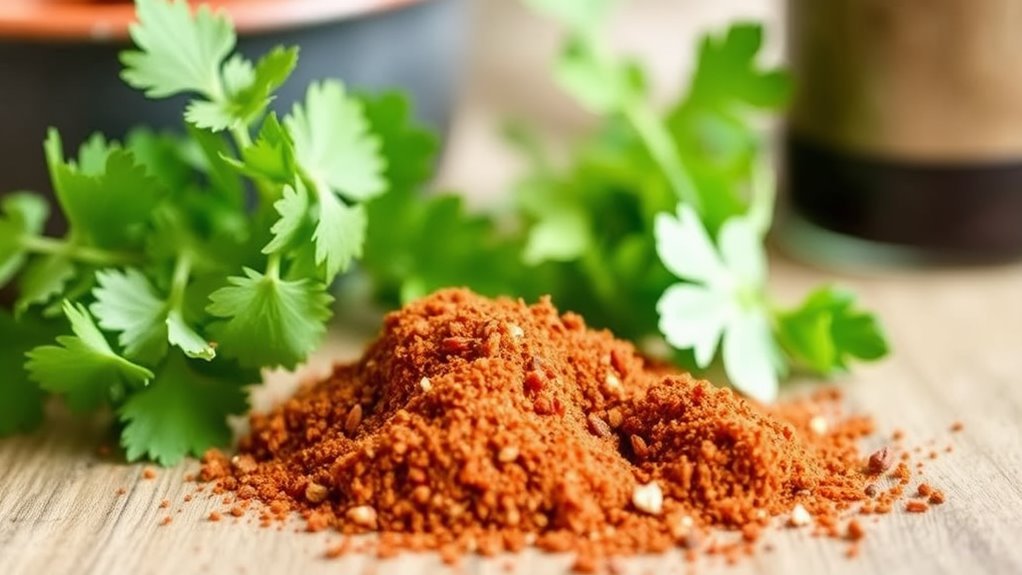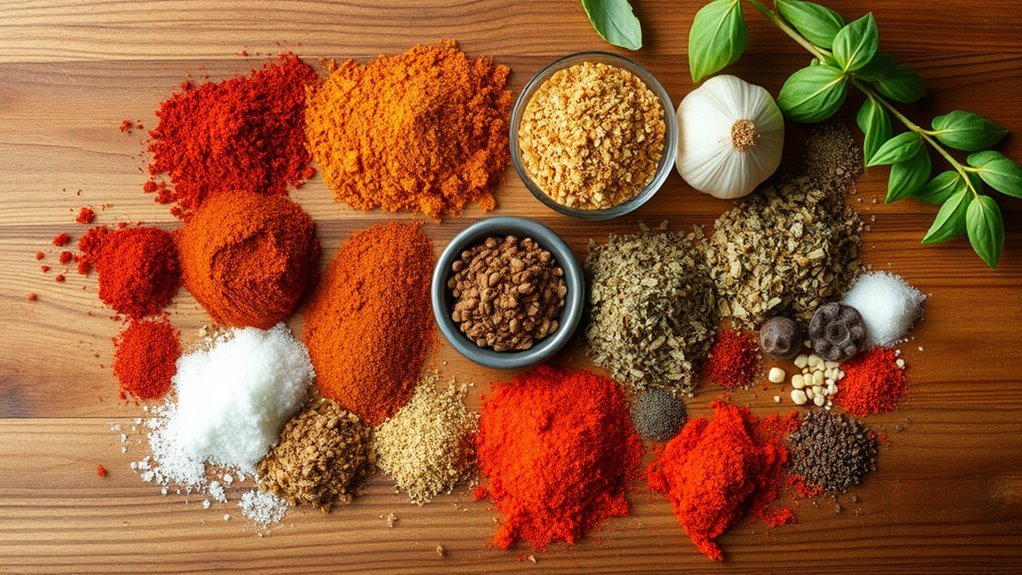Did you know that a good spice blend can elevate just about any dish? I've been in the kitchen long enough to know that having a few trusty mixtures up your sleeve makes cooking easier and far more enjoyable. One of the real gems in my collection is Southwest seasoning. It's a cinch to whip up, and you probably have most of the ingredients already hanging around your spice rack.
With a combination of ancho chili powder, cumin, and a few other standout spices, this blend can really add some zest to your grilled meats, roasted veggies, or even that plain ol' pasta you're craving to jazz up. And let's not overlook how easy it is to store your homemade mix or tailor it to your taste. So grab your measuring spoons, and let's get cooking! Your taste buds are going to thank you.
Ingredients

When preparing a Homemade Southwest Seasoning Mix, it is vital to balance flavors that capture the essence of southwestern cuisine. The mix begins with a base that brings warmth and a hint of earthiness through the use of 2 tablespoons of ancho chili powder. This serves as the foundation for the seasoning's depth and heat. To enhance these characteristics, incorporate 1 tablespoon each of cumin, smoked paprika, regular paprika, garlic powder, oregano, and kosher salt. Together, they create a harmonious blend that enriches any southwest-inspired dish with its robust profile.
For added complexity, introduce 2 teaspoons each of ground coriander, onion powder, and turmeric. These spices complement the primary ingredients and contribute an additional layer of aromatic and savory notes that round out the mix. Adjust the spice level according to your taste by adding 1 teaspoon each of ground black pepper and cayenne pepper, which provide a lively kick. To achieve the best flavor, opt for high-quality spices from brands such as Morton & Bassett, Simple Organic, Frontier Co-op, or Penzys, ensuring the seasoning reaches its full potential. Below is a table outlining these common ingredients essential for crafting this flavorful seasoning mix.
| Ingredient | Amount |
|---|---|
| Ancho chili powder | 2 tablespoons |
| Cumin | 1 tablespoon |
| Smoked paprika | 1 tablespoon |
| Regular paprika | 1 tablespoon |
| Garlic powder | 1 tablespoon |
| Oregano | 1 tablespoon |
| Kosher salt | 1 tablespoon |
| Ground coriander | 2 teaspoons |
| Onion powder | 2 teaspoons |
| Turmeric | 2 teaspoons |
| Ground black pepper | 1 teaspoon |
| Cayenne pepper | 1 teaspoon |
Recipe

Split any long paragraphs in the [TEXT] into separate paragraphs. Write the entire [TEXT] again, but with any long paragraphs split.
Retain any and all special formatting (e.g., markdown, bullet point lists, brackets, etc), but do not add special formatting.
Cooking Tips

Mastery in the kitchen often begins with understanding how to use your ingredients effectively. When it comes to homemade Southwest seasoning, storing and using it correctly can elevate your dishes. Remember to keep the blend in an airtight container, preserving its fresh aroma and robust flavors. Here's a handy table with cooking tips for your Southwest seasoning:
| Tip | Description |
|---|---|
| Storage | Use an airtight container in a cool, dry place. |
| Spice Adjustment | Start small, then adjust based on taste preferences. |
| Mixing Timing | Add spices just before cooking for a coherent flavor profile. |
| Smoked Flavor Boost | Try smoked paprika for a deeper, richer taste. |
| Pre-Cooking Preparation | Use as a dry rub 30 minutes before grilling meats or veggies for maximum depth. |
Sprinkling a little smoked paprika, garlic powder, cayenne pepper, and onion powder can transform a dish. Appreciate how each spice dances on your palate. Using it as a dry rub? Allow those spices to penetrate, giving any grilled meal that classic kick. Just remember, a little seasoning goes a long way, so adjust the spices to find your perfect balance. Cooking with confidence starts with these simple tips, making every meal an adventure.
History

Southwest seasoning has fascinating roots that trace back to the rich culinary traditions of the Southwestern United States, heavily influenced by Mexican and Native American flavors. It's incredible to think that the spices we sprinkle over our grilled meats today have ties to ancient cuisines.
The original inhabitants of this region, long before any borders were drawn, used chili peppers and cumin as essential parts of their diet. These vibrant ingredients form the backbone of the Southwest spice blend and even the more familiar taco seasoning.
The introduction of ancho chili powder, smoked paprika, and garlic powder to this mix came with Spanish and Mexican settlers. They brought new flavors that intertwined beautifully with indigenous traditions. This fusion created a seasoning so versatile, it's now a must-have in any kitchen craving a touch of the desert sun.
Interestingly, the Southwest spice blend as we're aware of it gained popularity in the mid-20th century. Cookbooks and commercial spice blends highlighted this delectable fusion, making it accessible to everyone.
Today, it's not just a seasoning—it's a journey through time, adding depth to tacos, burritos, and even dips, reminding us of a flavorful past.
Conclusion
In conclusion, making your own Southwest seasoning is a simple way to bring a kick to your meals without breaking a sweat. There's something satisfying about having a little homemade magic in the pantry, ready to sprinkle on whatever you're cooking. It won't just enhance flavors; it'll take your dishes up a notch, leaving your family wondering what your secret is. And the best part? You can adjust the spices just the way you like them. No need to stick to a rigid recipe—be the boss of your own blend. So, roll up your sleeves, mix up a batch, and see how this flavorful seasoning can breathe new life into your everyday meals. Happy cooking!

